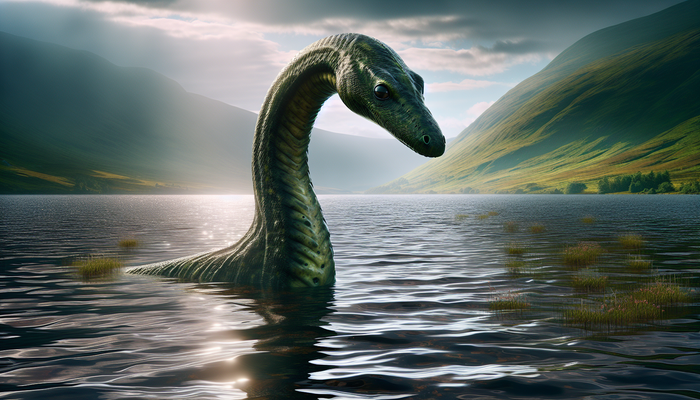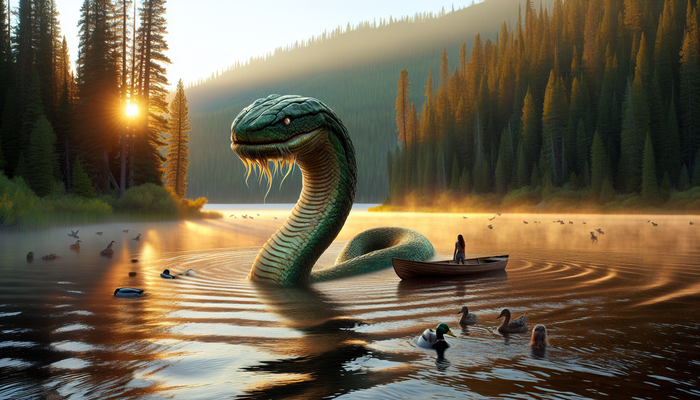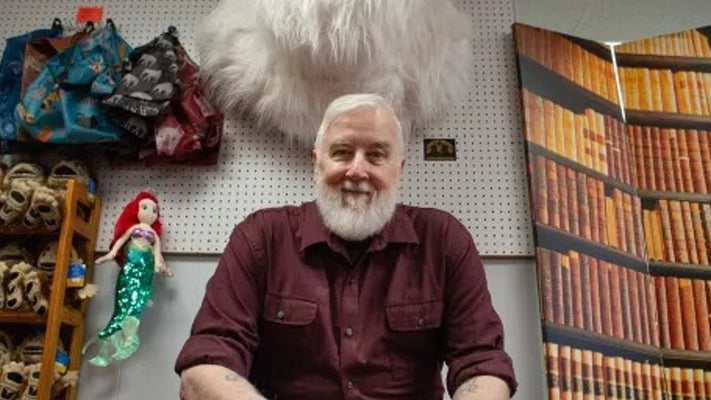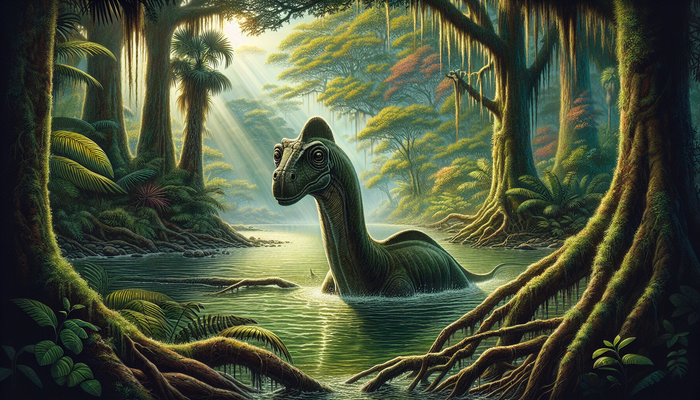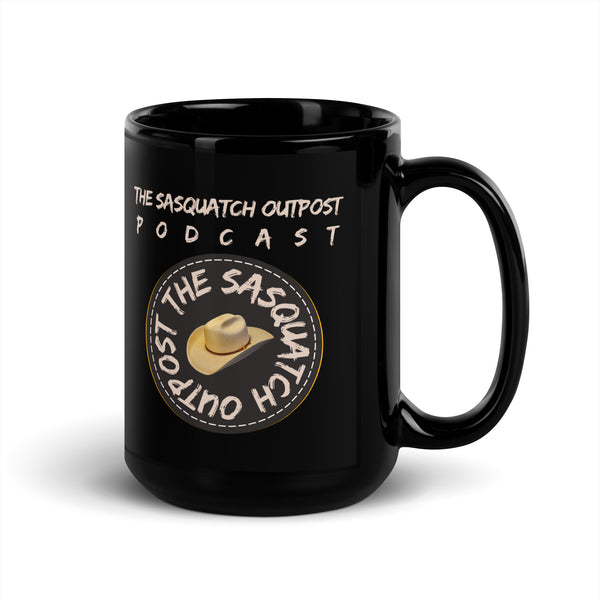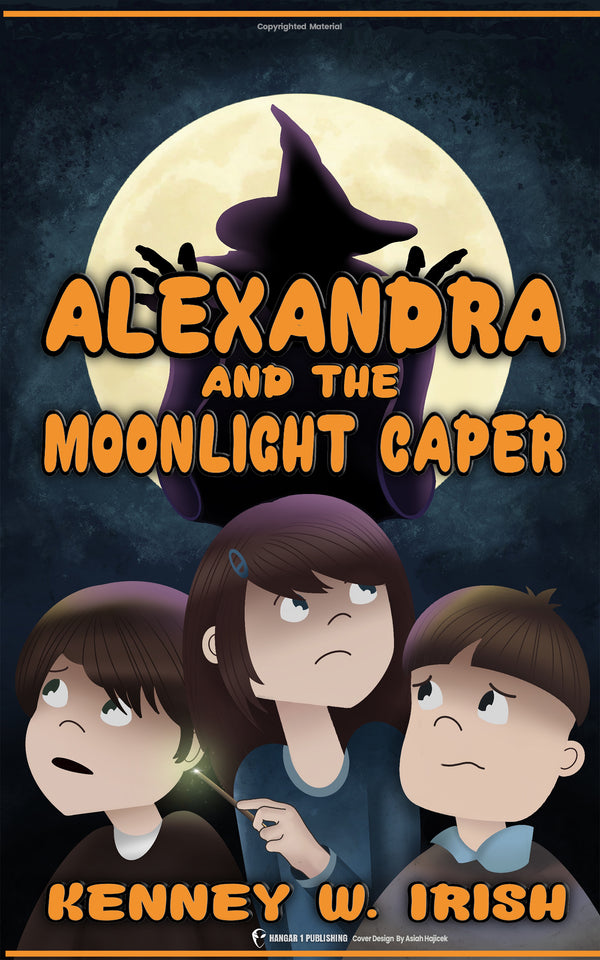Hawaii's Captivating Cryptid Legends
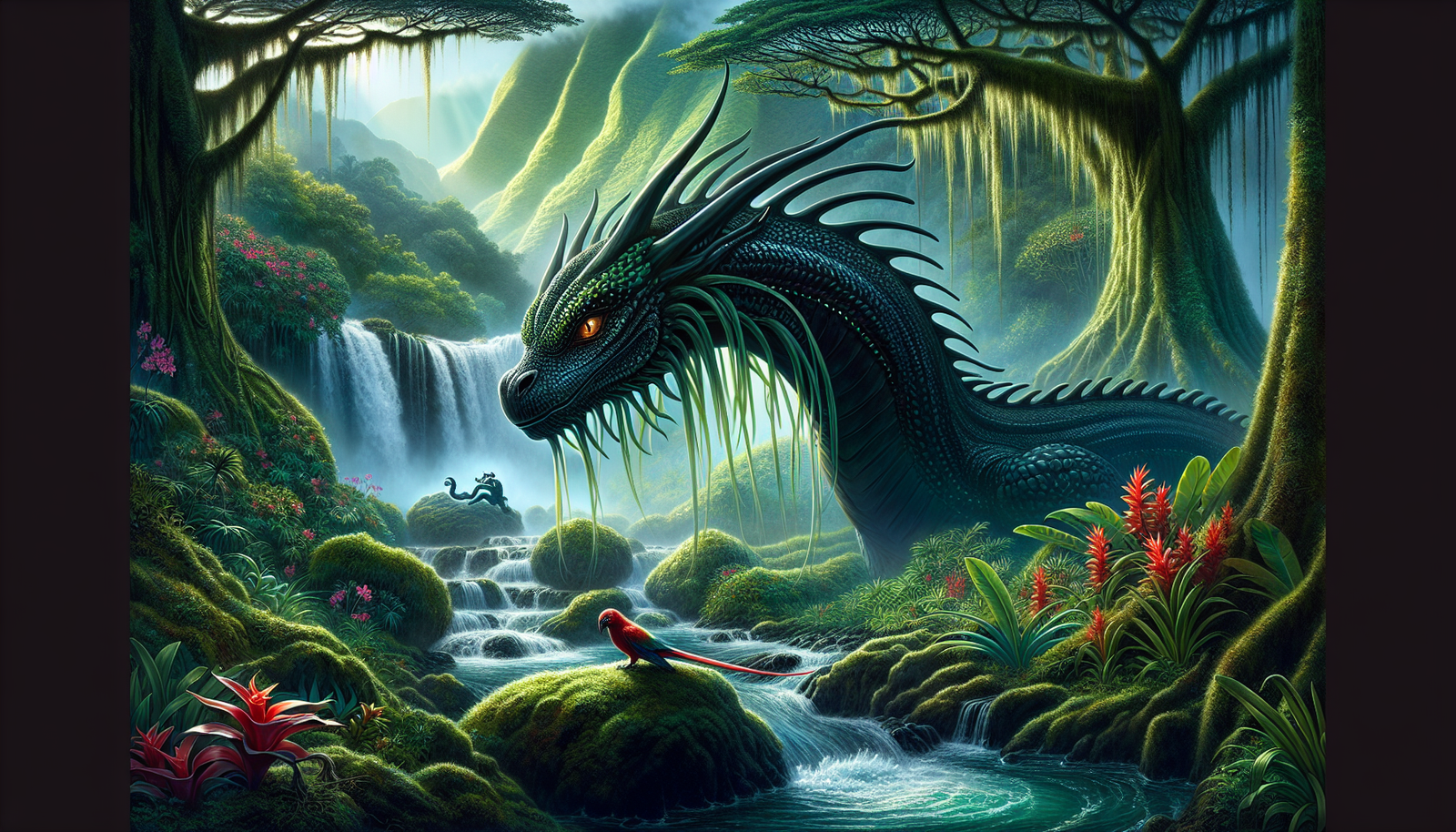
By Ava Martinez, Bigfoot Researcher and Teacher
The Mystical Allure of Hawaii's Cryptids
As a lifelong cryptozoology enthusiast and researcher, I've always been drawn to places that seem to shimmer with an aura of the unknown, where the lines between myth and reality blur into an alluring haze. And when it comes to hotspots for cryptozoological wonders, few places on Earth can rival the enchanted islands of Hawaii. This lush archipelago in the midst of the vast Pacific is home to an astounding array of legendary creatures - beings that have enthralled the native Hawaiian people for centuries and continue to capture the imaginations of seekers of the strange and unexplained to this day.
Hawaii's cryptids are not just fanciful monsters conjured up to frighten children or entertain tourists. They are deeply woven into the fabric of Hawaiian folklore, cultural traditions, and spiritual beliefs. For the native Hawaiians, these mysterious entities - the menehune, mo'o, aikanaka, and more - are as real and vital as the volcanic mountains, the crashing waves, and the swaying palms that define their island home. Belief in these cryptids is not a fringe notion but an integral part of the Hawaiian worldview, a fundamental aspect of their heritage that connects them to the mana, or spiritual essence and power, that permeates every rock, tree, and waterfall.
As an outsider exploring these legends, I've always tried to approach them with a deep sense of respect, empathy, and open-minded curiosity. My goal is not to debunk or trivialize these beliefs, but to understand their significance and marvel at the enduring power they hold in Hawaiian culture. At the same time, the researcher in me can't help but ponder the tantalizing question: could any of these cryptids have a basis in biological reality? Might there be more to some of these tales than myth alone? It's a delicate balance, but one that makes the study of Hawaii's cryptid lore all the more captivating.
In my travels across the islands, speaking with kupuna (elders), kama'aina (longtime residents), and fellow cryptid enthusiasts, I've been struck by the richness and diversity of these legends. Each island seems to have its own unique set of cryptid denizens, creatures that are perfectly adapted to their particular landscapes and woven into the tapestry of local lore. At the same time, I've discovered striking parallels between Hawaii's cryptids and those of other Polynesian cultures, hinting at ancient origins and shared cultural roots that stretch across the vastness of the Pacific.
But perhaps what has moved me most is the way in which these legends seem to breathe life and enchantment into the already wondrous Hawaiian environment. Hiking a jungle trail or swimming in a forest pool takes on a whole new dimension when you know that a menehune or mo'o could be watching from just out of sight. The ever-present possibility of a cryptid encounter, however remote, imbues every landscape with a sense of mystery and magic that is hard to shake.
In the pages that follow, I invite you to join me on a deep dive into the spellbinding world of Hawaii's cryptids. We'll explore the origins, appearances, and cultural significance of these legendary beings, from the diminutive menehune to the formidable mo'o, the elusive aikanaka to the fearsome shark-men. Along the way, we'll examine native Hawaiian accounts, historical reports, and modern sightings, always striving to separate folklore from fact while respecting the profound meaning these creatures hold for the Hawaiian people.
So sit back, let your imagination roam free, and prepare to be enchanted as we unravel the mysteries that lurk in the mist-shrouded valleys, lush forests, and sparkling waters of Hawaii's cryptid realm. For whether these beings are flesh-and-blood creatures or phantoms of the mind, there is no denying the very real power they wield over the Hawaiian psyche and the human spirit. In the end, perhaps it is not so much a question of whether they exist, but what they can teach us about our own place in the natural world and the wonders that lie hidden beyond the veil of the ordinary.
The Menehune: Mythical Master Craftsmen of Old Hawaii
Of all Hawaii's legendary creatures, few have captured the popular imagination quite like the menehune. These diminutive beings, often described as a race of skilled craftsmen standing just two to three feet tall, are said to have inhabited the Hawaiian islands long before the first Polynesian settlers arrived. According to native lore, the menehune were master builders responsible for constructing many of the impressive stone structures scattered across the islands, from ancient temples (heiau) and massive fishponds to complex irrigation systems and lengthy roadways.
One of the most striking things about the menehune is their reported method of working. These industrious little people were said to labor only at night, under the cover of darkness, and to shun all contact with ordinary humans. Legends tell of menehune crews assembling by the hundreds or even thousands to work on a single project, often completing enormous feats of engineering in just one night. Some say the menehune would line up in a miles-long relay chain, passing stones hand to hand to transport building materials from distant quarries.
Among the most famous structures attributed to the menehune is the Alekoko Fishpond on the island of Kauai. This sprawling aquaculture complex, covering some 40 acres and enclosed by a 900-foot-long stone wall, is said to have been built by menehune workers in a single night at the behest of a local chief. Another legendary menehune construction is the Kiki a Ola irrigation ditch on Kauai, a sophisticated water channel that still functions to this day.
So who were these mysterious master builders of old Hawaii? Conventional wisdom holds that the menehune are purely mythical beings, akin to European fairies or leprechauns. But some researchers have proposed that the legends could be rooted in a kernel of historical truth. One intriguing piece of evidence is an 1820 census conducted by King Kaumuali'i of Kauai, which listed 65 people as being of menehune ancestry. Could this suggest that there was once a real population of people on the islands who were known as menehune?
Some have speculated that the menehune may represent a race of Negrito or Pygmy people who were the first to settle Hawaii, only to be later subjugated or driven into hiding by subsequent waves of Polynesian migrants. Proponents of this theory point to the recent discovery of extinct dwarf human species like Homo floresiensis in Indonesia as evidence that small-statured hominid populations once thrived in the Pacific region. And indeed, some archaeologists have identified stone ruins on the islands that seem to predate the arrival of the Polynesians and exhibit unique construction techniques that could be the handiwork of a lost race.
Skeptics, however, argue that the menehune are more likely a cultural memory of the social and political dynamics between different classes or waves of Polynesian settlers. In this view, the "menehune" may have originally been a term for the common people or lower classes who were tasked with building public works projects under the direction of the ali'i or ruling elites. Over time, these stories of an industrious servant class could have morphed into legends of an ancient race of supernatural craftsmen.
Regardless of their origins, the menehune remain a vivid and enduring presence in Hawaiian folklore. Many kama'aina will tell you stories of chance encounters with these elusive little people, often glimpsed at night in the forests or near ancient ruins. Some even leave offerings of food or small gifts in the hopes of winning the favor of the menehune and being blessed with good luck or fine craftsmanship.
As a cryptozoology researcher, I find the menehune to be one of the most fascinating and plausible of Hawaii's legendary creatures. While I'm not convinced that a race of dwarf hominids once inhabited the islands, I do think the legends tap into some deep cultural memories and archetypes that resonate across time and space. The idea of a hidden race of skilled artisans who work in secret to create marvels is a powerful one that crops up in myths and fairy tales around the world.
Moreover, I believe the menehune legends speak to a fundamental human yearning to imbue our built environment with a sense of enchantment and mystery. In an age when we know the provenance of every brick and steel beam, there's something alluring about the idea that some of our greatest structures could be the work of magical beings laboring beyond our sight. The menehune remind us that even the most familiar places can hold secrets and that the line between the mundane and the marvelous is often thinner than we think.
The Mo'o: Shapeshifting Dragon Spirits of the Waterways
While the menehune may be the most famous of Hawaii's cryptids, no legendary creatures are more intimately woven into the fabric of the islands' landscapes and spiritual traditions than the mo'o. These shapeshifting dragon spirits are said to inhabit the freshwater streams, ponds, and springs that are the lifeblood of the Hawaiian ecosystem, serving as both guardians of these precious resources and embodiments of the primal forces of nature.
In their true form, mo'o are often described as gargantuan lizards or crocodilians, reaching lengths of up to thirty feet or more. Their scaly bodies are black as the deepest reaches of a mountain pool and glisten with an oily sheen that reflects the colors of their watery domain. Some accounts speak of mo'o with eyes that burn like embers and long, sinuous tails that can whip up whirlpools and waterspouts.
But the mo'o are much more than oversized reptiles. They are powerful shapeshifters, able to take on a dizzying array of forms to suit their needs and whims. At times, they may appear as tiny geckos, skittering among the rocks and vegetation along a streambank. At others, they may manifest as beautiful women, with flowing hair and hypnotic eyes that can lure unwary men to their doom. Some legends even speak of mo'o disguising themselves as everyday objects like logs or canoes, the better to catch their prey by surprise.
For many Hawaiian families, mo'o are not just mythical beasts but aumakua - ancestral spirits who serve as protectors and guides. These families trace their lineage back to particular mo'o who once dwelled in their local waterways, and they maintain a strong spiritual bond with these creatures through offerings, prayers, and other rituals. In some cases, the relationship is so close that family members are said to be able to communicate with their mo'o aumakua in dreams or visions, receiving wisdom and guidance from beyond the veil.
But while mo'o can be benevolent guardians, they are also known for their fierce tempers and territorial natures. Many legends speak of mo'o lashing out at those who trespass in their domain or fail to show proper respect, dragging swimmers down to the depths or unleashing floods and landslides upon nearby villages. Some tales even describe mo'o shapeshifting into seductive women to lure men to secluded pools, only to drown them in a fit of rage or jealousy.
As a cryptozoologist, I find the mo'o to be endlessly fascinating not just for their dramatic appearances and powers, but for what they may represent in terms of cultural memory and zoological possibility. Some researchers have proposed that the mo'o legends could be rooted in ancestral Polynesian memories of the giant monitor lizards and saltwater crocodiles that haunt the rivers and coasts of Indonesia and Melanesia, the regions from which the first Hawaiian settlers are thought to have originated. Over generations, these fearsome reptiles could have taken on supernatural attributes and become woven into the mythology of the watery landscapes the Hawaiians now called home.
From Bigfoot to UFOs: Hangar 1 Publishing Has You Covered!
Explore Untold Stories: Venture into the world of UFOs, cryptids, Bigfoot, and beyond. Every story is a journey into the extraordinary.
Immersive Book Technology: Experience real videos, sights, and sounds within our books. Its not just reading; its an adventure.


